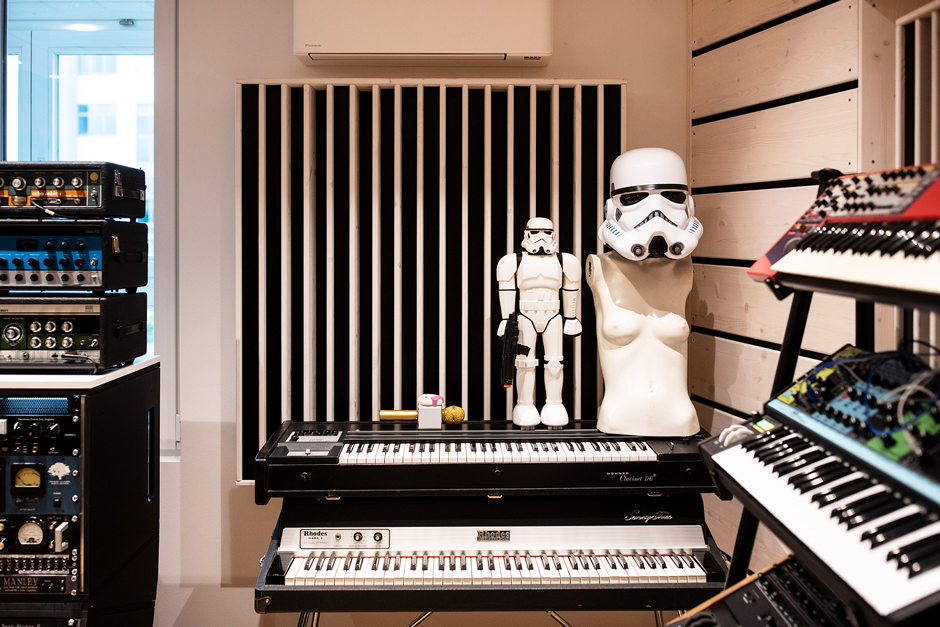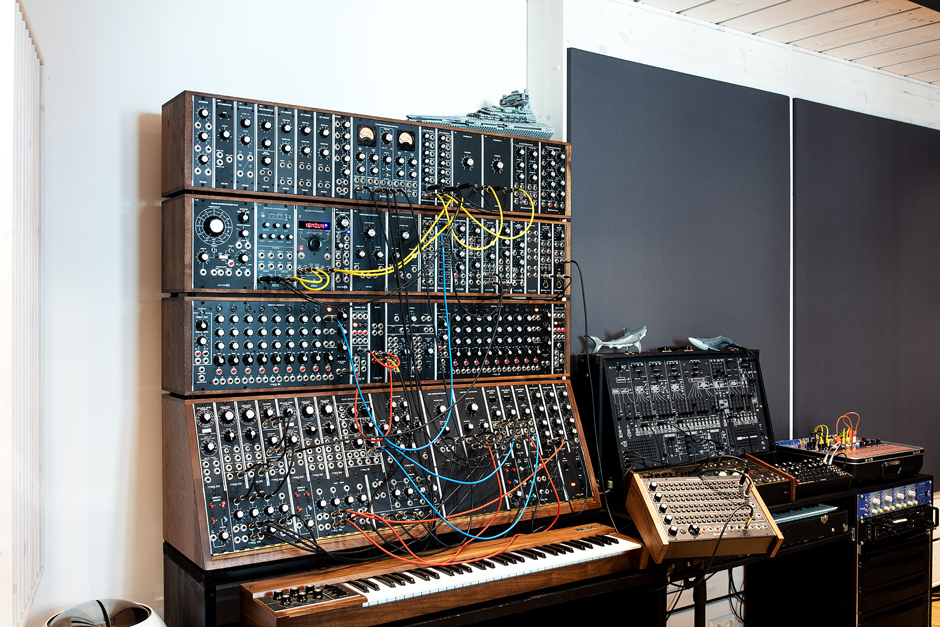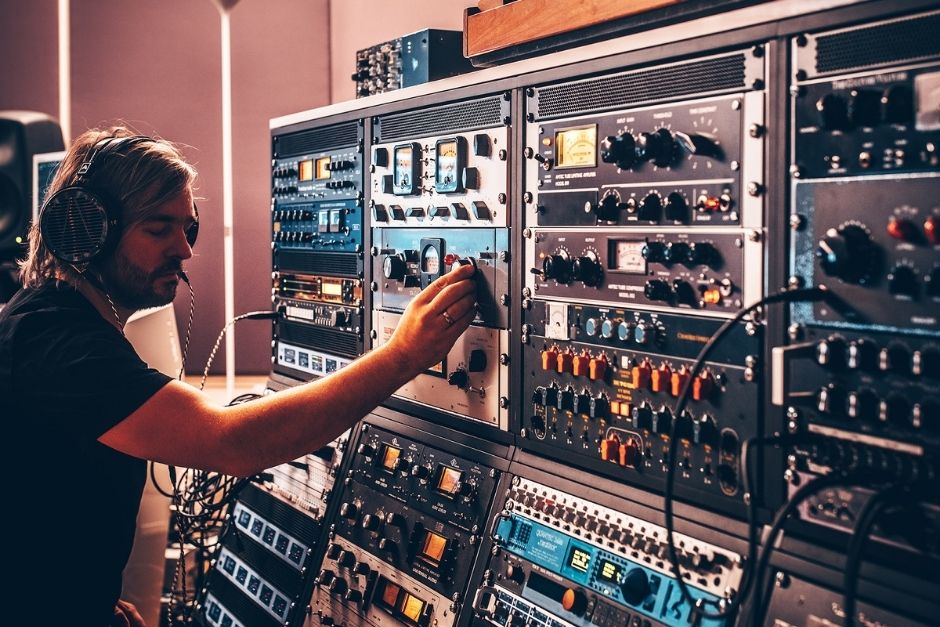As one of Europe’s most in-demand mixing engineers, Hannes Bieger has built an untouchable reputation, with an exhaustive client list that includes some of the biggest names in contemporary house and techno. Buoyed by years of experience, a renewed zest for production, and a lifelong romance with electronic music he has been touring the world with his ambitious live show, producing a series of acclaimed releases and a stunning album. Determined, driven and downright talented Hannes Bieger is a mixing and production powerhouse with a live show that will blow your socks off.
For 11 years he occupied a lofty position in the world of mixing and mastering, his magic touch making him a popular choice for a variety of respected producers. Parallel to his production exploits, he has been investing his time and energy into creating his own live show. Proof that dedication to one’s craft and an uncompromising focus on quality over quantity can provide the perfect foundation to a lifetime of success. Hannes Bieger is an artist who is reaping the rewards from a lifelong commitment to music, sharing his gift with the world every step of the way.
Recently Hannes Bieger launched his new studio in Berlin. Today he shares 5 tips to build your own one.
1. Don’t wait too long
Let’s face it: You need substantial resources to build a proper studio: time, space, knowledge, and money – and lots of it. But, as they say, Rome wasn’t built in a day. That means, as an aspiring producer starting to set foot in the game you might not be in a position to build a “proper” studio yet, but don’t fret too much about it. As you gain experience you’ll get a clearer picture of your very own requirements. After all, the best studio is of not much use when you don’t fully understand how to use it. Obviously, it’s great to aim high and have goals, but never forget it’s a journey, and it will stay a journey wherever you go. Even if you reach the big milestone you once envisioned, it won’t be the end of all days, but merely the starting point for another endeavor. In terms of your studio, this simply means you’ve got to start somewhere and expand as you go. And even if you’re not yet in a position to build a proper room like I just did, there is always something you can do to improve your workplace! The most important thing is to find out what it is and do it. Don’t make the same mistake that I did, when I started out, and wait too long until you start to take monitoring and room acoustics seriously. Start now!

2. Do the right things
If you start looking for potential improvements you will notice there is a world of advice out there, and many companies that want to sell you their products, be it monitor speakers, acoustic modules, measurement microphones, apps, or other gadgets. If you do the right stuff, you don’t necessarily have to invest an awful lot of money to see some real, big improvements. You need to invest one thing though: time! There is plenty of good advice on the internet for those who can find it. Better yet, ask your friends and colleagues, and see what they are suggesting. The goal should always be to improve your monitoring situation as much as you can, for then your mixes and productions will translate much better – which basically means that they sound as good in the outside world as they did in your studio. Of course, the totally transparent sounding studio does not exist. In fact, monitor speakers are some of the most colored sounding bits of kit out there, regardless of what the manufacturers are saying. They differ much more than, say, microphone preamps or converters. And the system has to work as a whole. Some speakers work great in certain rooms and not at all in others. This is why people can get so opinionated about monitors – they can actually make a difference, and they can sound very different, depending on where and how you place them. But, the “best” speakers don’t exist, regardless of what someone may tell you. There are only good or great speakers based on your own personal requirements, budget, room. Try before you buy! Also, as much as some people may want to make you believe otherwise – you can’t fix a time-domain problem in the frequency domain! This means: Typical room resonance problems result in some frequencies resonating longer than others, not necessarily louder. If you try to fix this with an EQ, you’ll create a dip at that frequency, but the tone still resonates longer than neighboring frequencies. This is the high goal of all studio building efforts: to achieve a situation where all frequencies fade in the same controlled amount of time. Some room corrections apps promise a „magic“ short cut, but you can’t betray the fundamental law of physics. That means: You may try such solutions to further refine a situation that is already good. But like a magic bullet, a short cut, a first measure they will fail. Instead, you have to do it the proper, the hard way, step by step.

3. Spend your money wisely
An expensive solution is not always the better one. Some fairly small steps can go a fairly long way, especially if you’re ready to do some DIY stuff. Almost 15 years ago I invented the infamous “dope traps” – google it! I used BILLY shelves by a famous nordic furniture discounter as frames, stuffed hemp fibers from the hardware store inside them, and put fabric covers on the front. This proved a very practical and cost-effective solution for broadband absorbers, and it worked really well. In fact, I used them up until a few weeks ago, when I left my previous studio. Stuff like this really can make your life easier without breaking the bank. Also, if possible, move your setup around in the room until you find the sweet spot. Untreated – or sparsely treated – rooms will sound fairly uneven. You’ll have more bass when you put your speakers directly against the wall, and even more when you put them in the corners. You can use this to your advantage, or it can make your life more complicated, depending on the situation. Ultimately, you’ll need the most linear sounding monitor chain you can obtain, plus some broadband absorption, diffusion, and possibly bass traps. Find out about the most pressing issues and tackle them first. And then repeat!

4. Avoid the typical traps
Ideally, you’ll want a symmetrical room with broadband absorption in the first reflection field (i.e. in the places where the sound from your speakers hits the walls and ceiling before reaching your ears), some diffusion in the rear and in other places, and for bass traps the corners of the room are the most effective. It may be difficult to achieve all this in your living room, at least if you don’t want to use it exclusively as a studio. So in many situations, you’ll be looking at a compromise of some sort. It might be more effective in terms of usable space to put your speakers directly against a wall, but sonically this is not such a good idea unless you have very small speakers and you need to get yourself some extra bass buildup this way. A book or record shelf against the real wall might work well as a makeshift diffuser. Often you can achieve good results by way of reshuffling the stuff in the room. Especially when producing electronic music you need to understand what you’re doing in the bass frequencies, i.e. around 50 Hz and even below. You’ll need monitors with 8“ woofers to fully access this frequency range. Don’t try to make it work too long with a 6“ or even 4.5“ bass. Also, a pair of 8“ full-range speakers is always better than a set of smaller speakers with a subwoofer. The latter may sound convincing in terms of the “ooomph” that it generates, but that doesn’t mean that it will make it easier to find a good frequency balance in your mix. On top of potential phase issues and other things, the subwoofer will add another crossover frequency in your monitoring setup, and this will be in a very critical frequency range. Avoid subwoofers unless you really know what you are doing and why you need them – a full-range system without sub is almost always the better solution.

5. Make your life easier in less than ideal situations
The perfect studio pretty much doesn’t exist for the same reasons that the perfectly transparent sounding monitor speaker doesn’t exist. But the good news is that this isn’t such a bad thing as you might think – because there are many band-aids and workarounds you can adopt, and which will still be of good use when you finally made it into a really good sounding space. It’s always a good idea to curate your own reference playlist where you collect tracks and productions which are sounding great to you. Not only does it help to sharpen your musical taste and your understanding of what it actually is that constitutes „good sound“. You can also use your playlist to refresh your ears in between sessions, and, maybe even more importantly, you can use a track with a good frequency balance to gauge the balance of your own mix. This is good in two ways: First of all, our ears get used to whatever they are hearing over time. This means you can mix a whole day with the kick being 3 dB too loud and never notice it because your ears adapt to this balance and accept it as the norm. This can easily be detected when comparing your track to some reference productions. Furthermore, when your room has a few issues you couldn’t solve yet, the reference tracks offer a fresh perspective and some guidance where you are standing with your own production. This applies even more so when you check your mix against the references on headphones. Contrary to a popular myth, headphones can be wonderful tools to check the bass frequencies. They may have their own sound signature, but with headphones, you can check your mix without the resonances of your room getting in the way. Get the best open-back headphone you can afford (personally I swear by my Audeze headphones), and you’ll have a wonderful addition to your monitoring setup that can help you a lot especially when working in a less than perfect room!
Hannes Bieger’s latest EP, ‘Arc’, is now available via Tronic Music. Grab your copy here.
Follow Hannes Bieger: Facebook | Instagram | Soundcloud | Spotify








